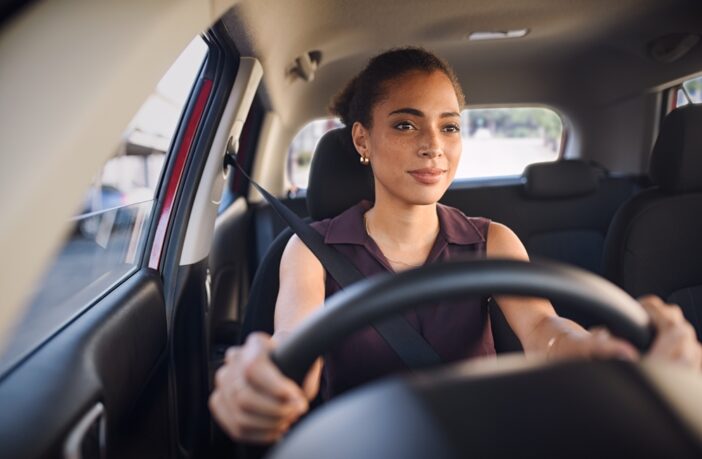When you’re inside your vehicle, your car acts as a barrier between you and potential harm. Rolling down your window can put your personal safety at risk. Unfortunately, not every person at the intersection is necessarily who they appear to be. While many are genuinely in need, there is always a risk that someone might use your goodwill as an opportunity for theft or physical harm.
Carjackings and robberies can happen in an instant, especially when you’re caught off guard. Rolling down your window creates a vulnerable moment that can lead to dangerous situations, as it reduces the distance and barrier between you and a potential threat. Maintaining your safety means keeping your windows up until you’re certain of your surroundings.
Traffic disruptions and accidents
Stoplights are designed for brief pauses in traffic flow, not for exchanges between drivers and pedestrians. Rolling down your window to interact with beggars can cause distractions, slowing down traffic and increasing the likelihood of accidents. Your attention may be diverted away from the road, which can create risky situations, especially if the light turns green suddenly.
Not only do such interactions risk your own safety, but they can also endanger others around you. Nearby drivers may not anticipate your sudden movements or slowing down, and pedestrians may not realize the flow of traffic resuming. By avoiding distractions, you help ensure that everyone on the road can travel safely.
Encouragement of dangerous behavior
Giving money to individuals at stoplights can inadvertently encourage them to remain in areas that are dangerous for both them and drivers. Street corners, busy intersections and stoplights are not safe places for anyone to be standing, as the risk of getting hit by a car or causing a traffic incident is high.
While you may feel compassion when you see someone asking for help, consider how your actions may unintentionally put them at greater risk. Encouraging street-side solicitation can make individuals believe that it’s okay to continue this behavior, exposing them to harm from passing vehicles and the elements. Supporting them in safer environments, like shelters or community centers, can be a more responsible approach.
Potential to support harmful habits
While it may be difficult to consider, handing money to someone at a stoplight does not always guarantee that it will be used for constructive purposes. Substance abuse and addiction are common issues among people who are homeless or panhandling. Giving money directly could potentially support harmful habits instead of aiding in their recovery or access to necessary resources.
Many local organizations focus on providing food, shelter, health care and other essential services to those in need. Instead of rolling down your window and handing out cash, consider donating directly to trusted charities or shelters that are equipped to provide targeted and supportive help. This ensures that your assistance goes toward productive aid and promotes long-term support.
A better way to help
Rolling down your window may seem like a quick and easy way to show kindness, but it often fails to provide sustainable or meaningful change for those in need. Most people asking for help at stoplights are facing a complex web of issues that cannot be resolved with a few dollars. Homelessness, addiction, mental health challenges and unemployment are all deep-rooted issues that require comprehensive support systems.
Instead of a fleeting exchange, consider how you can make a lasting impact by volunteering your time, donating to reputable organizations or advocating for policies that address the systemic causes of poverty. Connecting with local charities that focus on rehabilitation, health care, employment and housing will help those in need find the resources that can truly make a difference in their lives. This not only offers them a chance for a better future but also provides a more structured approach to support.
Making compassionate choices
When you see someone in need at a stoplight, it’s normal to feel a sense of urgency to help them. That moment of eye contact can tug at your heartstrings and make you want to do something immediately. However, it’s essential to approach the situation thoughtfully and responsibly. Rolling down your window may provide instant relief to your conscience, but it’s not always the most effective way to help those in need.
Remember, there are safer and more impactful ways to show compassion. Whether it’s donating to an organization, volunteering your time or simply spreading awareness about the resources available to people facing homelessness and poverty, you can make a difference without putting yourself or others at risk.
What you can do instead
If you are compelled to help when you encounter someone at a stoplight, consider having small care packages on hand. Items like water bottles, non-perishable snacks, hygiene products and information about local shelters and services can be a practical alternative to giving cash. Providing these essentials can make a more immediate and positive impact on their well-being without encouraging behaviors that may put them or others in harm’s way.
You might also want to support local initiatives that focus on long-term solutions. Whether it’s supporting affordable housing projects, mental health services or addiction recovery programs, your contributions can go toward addressing the root causes of poverty and help break the cycle that leads people to beg at intersections.
This story was created using AI technology.



